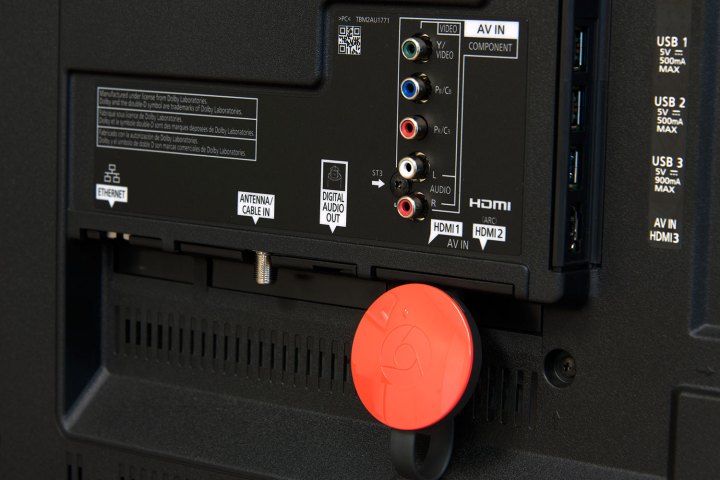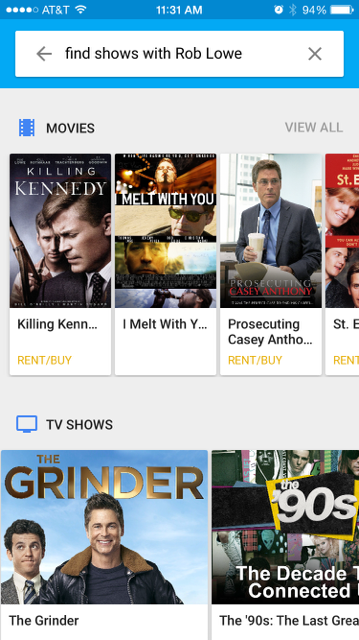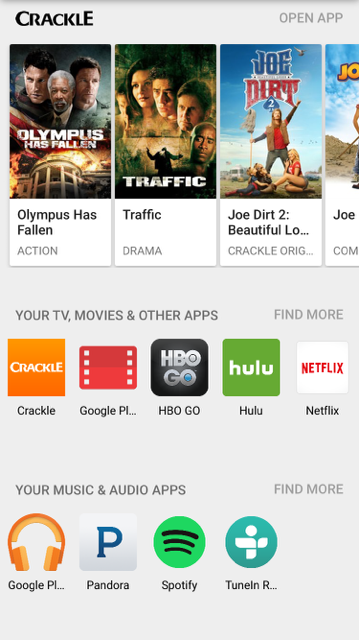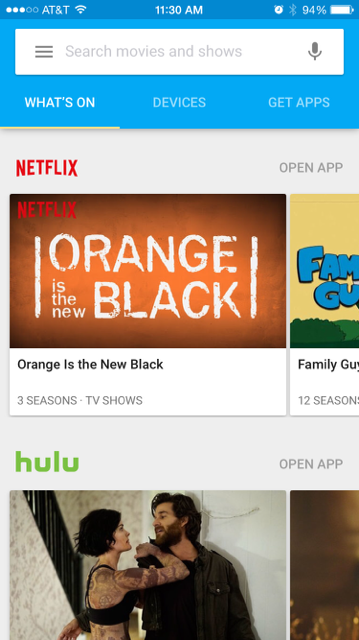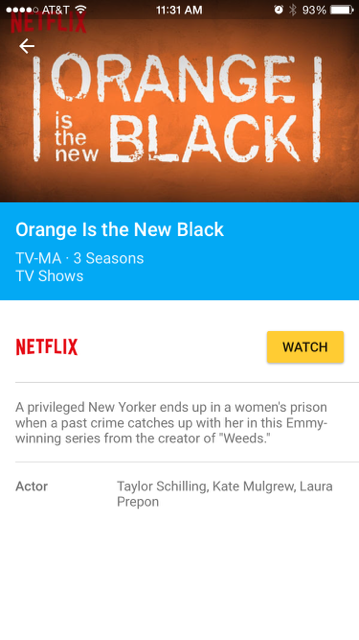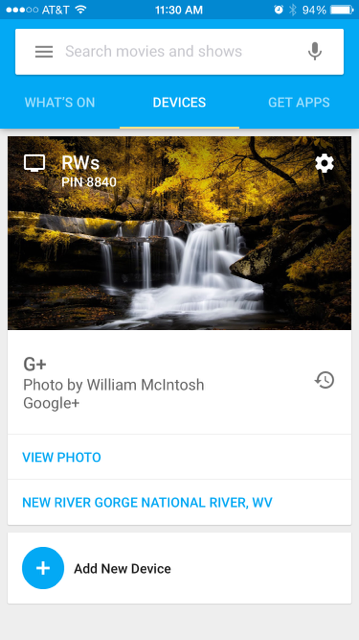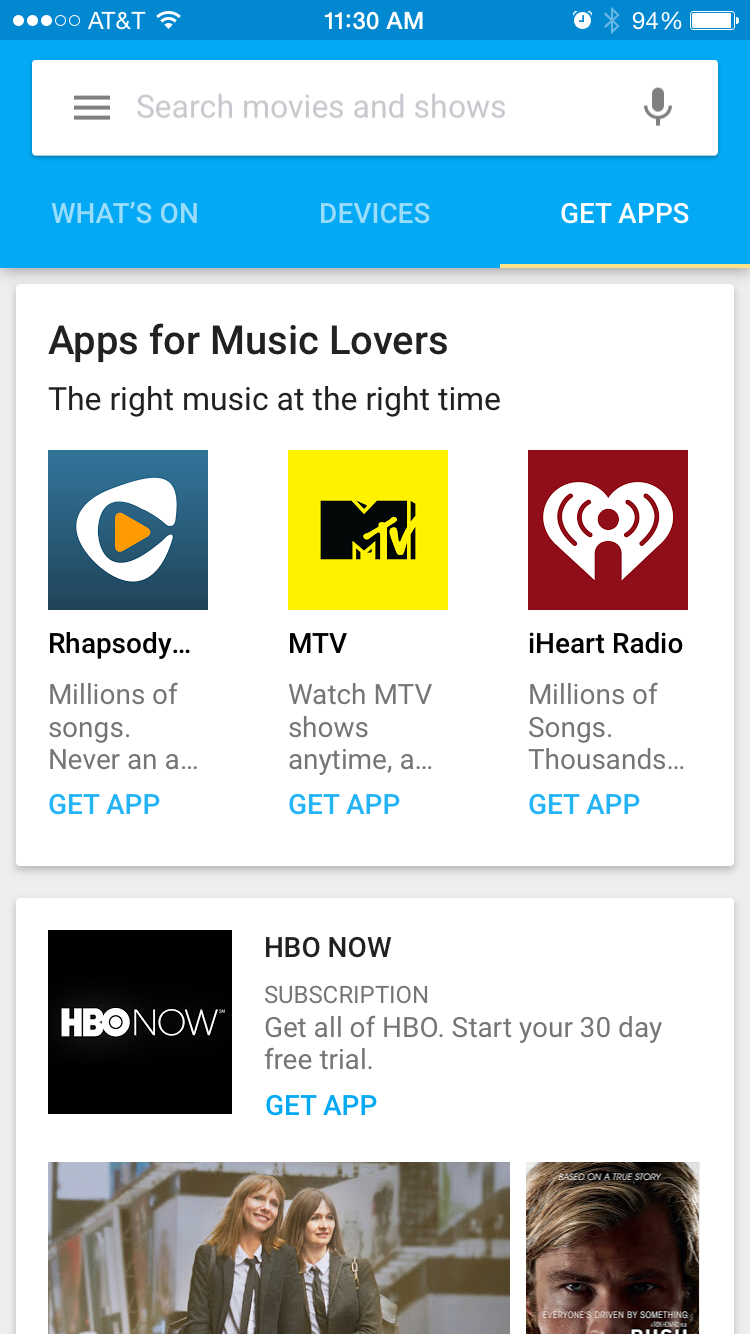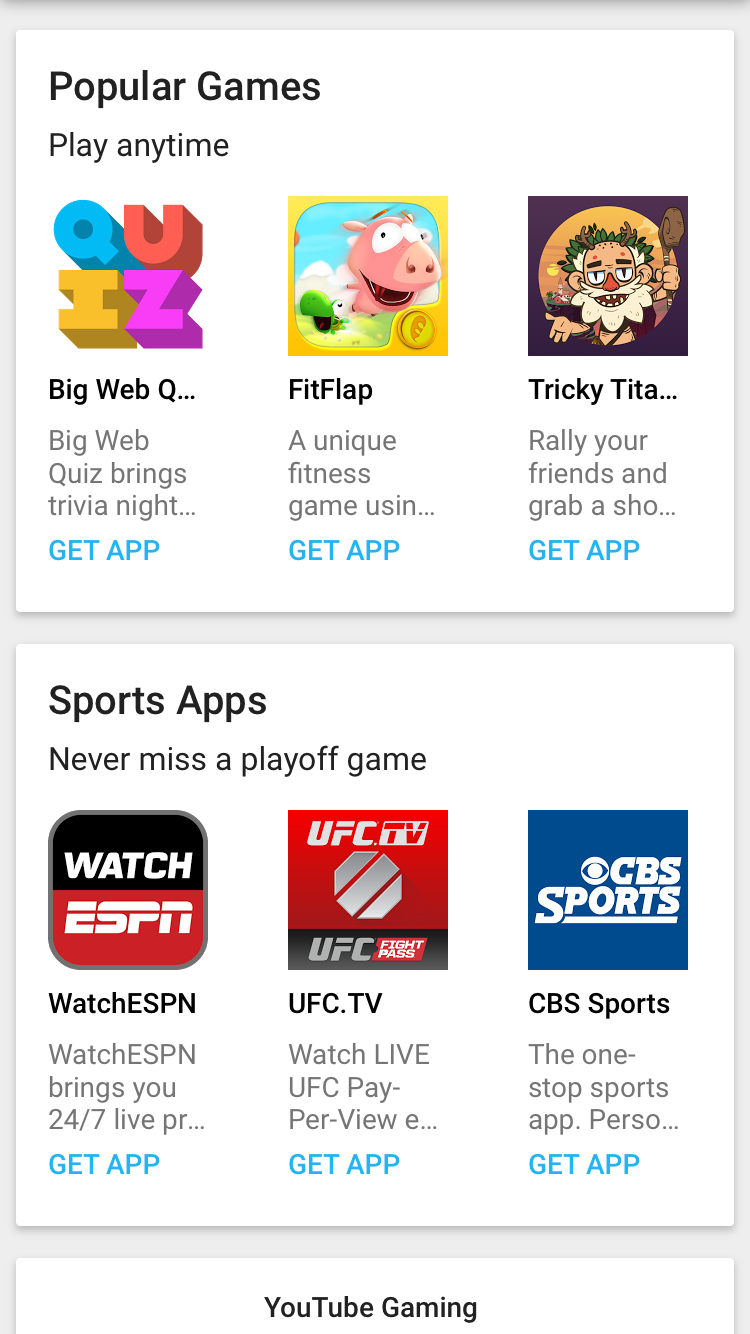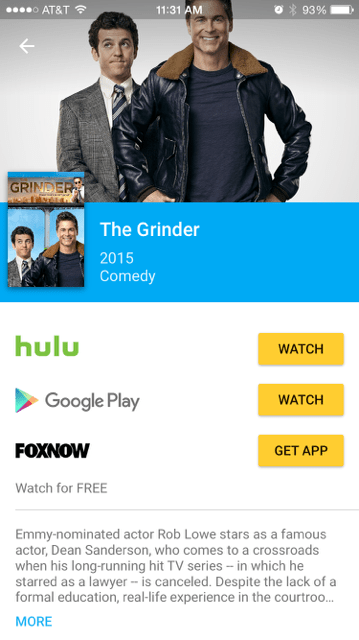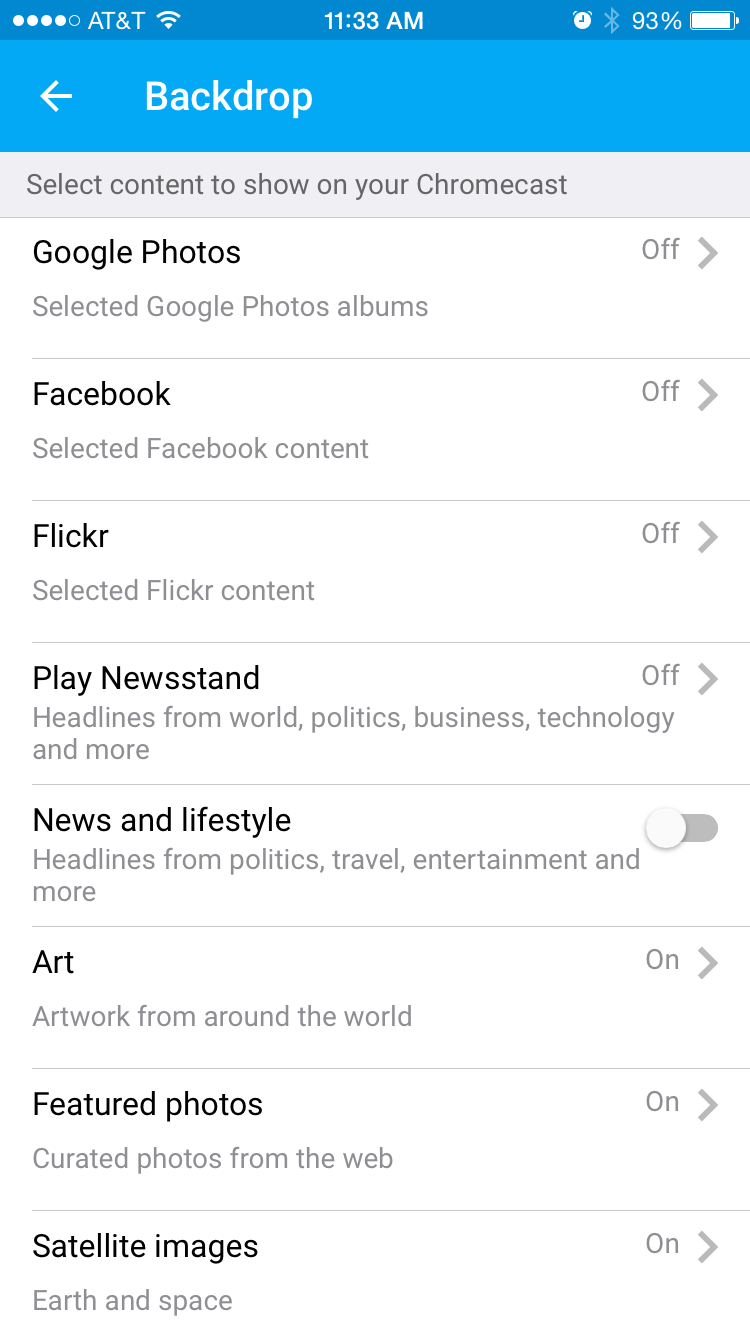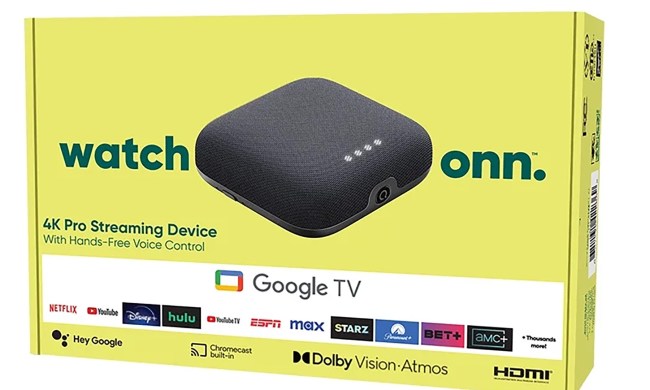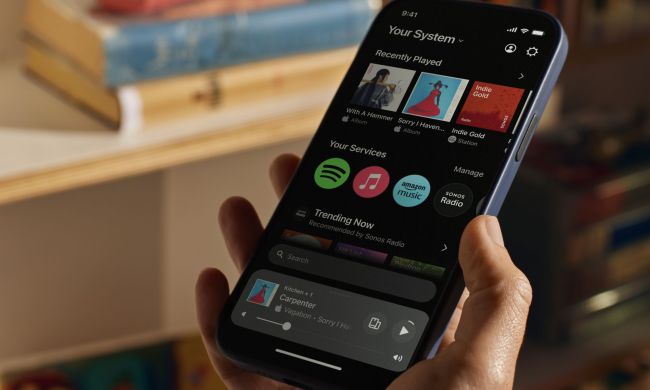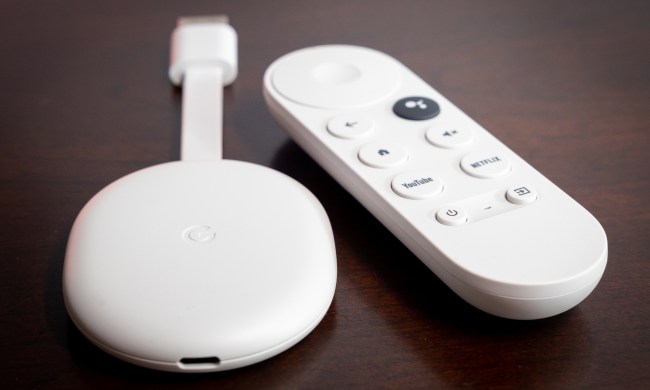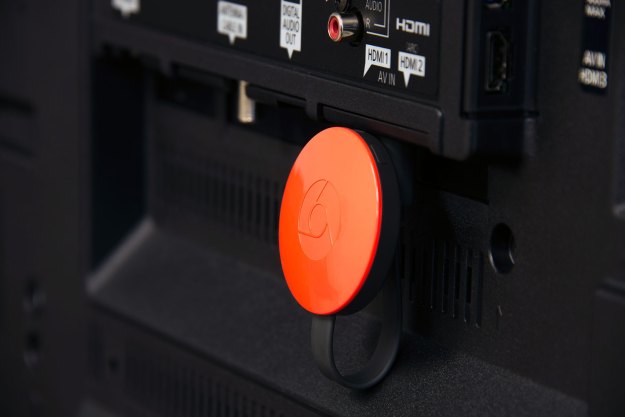
“Even if you’re already committed to another streamer, the Chromecast’s new app alone makes picking one up well worth the 35 bucks.”
- New design fits any port
- Slightly faster load speeds
- New app is a huge improvement
- Cross-platform search at this price is impressive
- Search could use a bit of work
- Still can't control playback from main app
- What's On could stand some more personalization
There are a lot of ways to stream these days – you’ve got your smart TVs, little black set-top boxes, and game consoles — but Google’s Chromecast has always gone its own way. When it launched in 2013, the little HDMI stick that provided a cheap and easy way to pull movies and TV shows from your favorite apps and “cast” them off to your TV screen was such a revolution, Digital Trends named it Best Product of 2013.
Now the Chromecast is back with an all-new look, a few new features, and a completely new app that promises to make finding what you want easier than ever before. But does this second-gen dongle boast enough new charms to trade in your old Chromecast? Spoiler alert: No, not really. But it’s still a real improvement to a device everyone should probably own. Here’s what’s new with Chromecast, and why you still want one.
Make sure to check out our review of the updated 3rd generation Chromecast.
New look, better fit
When it comes to its exterior, the next-gen Chromecast more or less got a total redesign. Now the dongle is less a stick and more of a small disk with a short, flexible HDMI cable extending from it. It’s a big change-up, and while Chromecast has added some splashy new colors (with names like Lemonade and Coral) the new shape does more for utility than aesthetics: The smaller HDMI connector and contorting cable make it a little easier to get into tight spaces for those hard-to-reach ports.
The magnet on the back of the little puck recoils the cable for compact travel, and it allows you to affix the device either to the cable itself or the back of your TV — provided you’ve got any metal back there, that is. Like the original, the Chromecast can get its power directly from a standard outlet or a compatible USB port on the back of your TV. Perhaps most convenient, the new design allows users who want a cleaner look to more easily tuck the device behind the TV when using side-mounted HDMI ports.
New hardware
Inside the little disk is a trio of antennae the device switches between to pull in the strongest possible Wi-Fi signal. The Chromecast is also now 802.11ac compatible, and it will connect to 5GHz access points. All of these improvements are meant to improve connection stability and improve the streaming experience. On paper, this adds up, but gauging any improvement in connectivity is tough for us because we’ve never had a problem in the first place. Still, those who have had trouble in the past should see at least some improvement.
A smaller HDMI connector and contorting cable make it a little easier to get into tight spaces.
At the Chromecast’s unveiling in San Francisco, Google also claimed the device will offer higher quality video and audio delivery, with less buffering for a better overall experience. But apart from a stronger hold on your Wi-Fi signal, there’s no real change in streaming quality. The new Chromecast offers 1080p HD, just like its predecessor, and (no surprise at $35) it doesn’t support 4K UHD content as other streamers do, notably Amazon’s new Fire TV ($100) and the Roku 4 ($130).
It’s all about the app
The new design touches are nice and all, but when it comes to the meat of what’s new with Chromecast, it’s all about the app. Unlike a lot of tech companies (which shall go unnamed here), Google’s software upgrade works with all Chromecast devices, including the new and old video streamers, and the new Chromecast Audio device. That makes trading up for a new one all but unnecessary for current Chromecast owners. Still, for those outside the Chromecast family, the app offers a glut of new features that make for a great reason to buy in. And hell, at $35, it’s also reason for heavy users to double down.
The updated app is broken into three main categories: What’s On, which serves up a selection of titles from all the apps you’ve already got on your phone (handy, though we wish it were personalized); Devices, which allows you to easily switch between Chromecasts; and Get Apps, which, as you may have guessed, lets you directly download all Chromecast-compatible streaming apps.
In the settings for each device, the app now makes it easy to add your own photos from services like Flickr, Facebook, and Google accounts to mix in with the standard (and gorgeous) background photos Chromecast serves up.
There’s also Fast Play, which is designed to predict what you’ll watch next, and pre-load it for faster delivery. The feature was shown in Google’s demo on the Netflix app, but honestly, if Fast Play is live for Netflix now, we didn’t notice a whole lot of difference there. In fact, while the new device is supposed to load faster overall, the gap between the new and old Chromecast is more of a small step than a giant leap. Load times are more likely to be affected by your home network congestion and configuration than the device itself.
The Chromecast app’s coolest new feature is the addition of cross-platform search.
The Chromecast app’s coolest new feature — by a long stretch — is the addition of cross-platform search, which allows you to search for content via text or voice across any of your Chromecast streaming apps. Search makes a huge difference when it comes to pure convenience — especially when trolling through Netflix’s dense catalog, and the new feature (finally) allows the Chromecast to better compete with the horde of pricier set-top boxes and streaming sticks from the likes of Amazon, Roku, and Apple.
Tapping on the mic or dropping the cursor in the window at the top of the screen allows you to search by voice or text, either for specific TV shows and movies, various genres like horror or sci-fi, or by the name of your favorite actors. Once the movie or show you’re looking for shows up, a simple click on the icon pulls up available choices for streaming (or purchase through Google Play), and a quick click takes you right to the appropriate app. You still have to control playback through the app itself, but it’s a big step up, nonetheless.
Search works relatively well in practice, though it’s not as steadfast as you might expect from a company that’s based its entire gilded empire around … well, searching for things.
Asking for shows with Rob Lowe, for instance, pulls up his new Fox show The Grinder, his new Comedy Central cartoon Moonbeam City, as well as a bunch of other stuff going back decades that you may or may not be able to stream. But oddly, it doesn’t find his last big project, Parks and Recreation.
We had similar experiences with other searches, too. The app couldn’t seem to find Jerry Seinfeld’s new show on Crackle, Comedians in Cars Getting Coffee, though it found other titles on the service just fine. Still, adding search is a big improvement, and we imagine it will get better over time.
Conclusion
In the end, the new design features are a step up, but not enough to make us trade in our old Chromecast — especially considering all of our favorite new features work just fine on the old version. But for those who still haven’t checked out a Chromecast, this new version offers more motivation than ever to get on board.
Chromecast remains the same funky way to stream it always was, and while it won’t replace the massive array of apps or intuitive home screens offered by pricier streaming set-top boxes, there’s still no easier — and more affordable — way to make your dumb TV smart. Even if you’re already committed to another streamer, the Chromecast’s new app alone makes picking one up well worth the 35 bones.
Highs
- New design fits any port
- Slightly faster load speeds
- New app is a huge improvement
- Cross-platform search at this price is impressive
Lows
- Search could use a bit of work
- Still can’t control playback from main app
- What’s On could stand some more personalization

